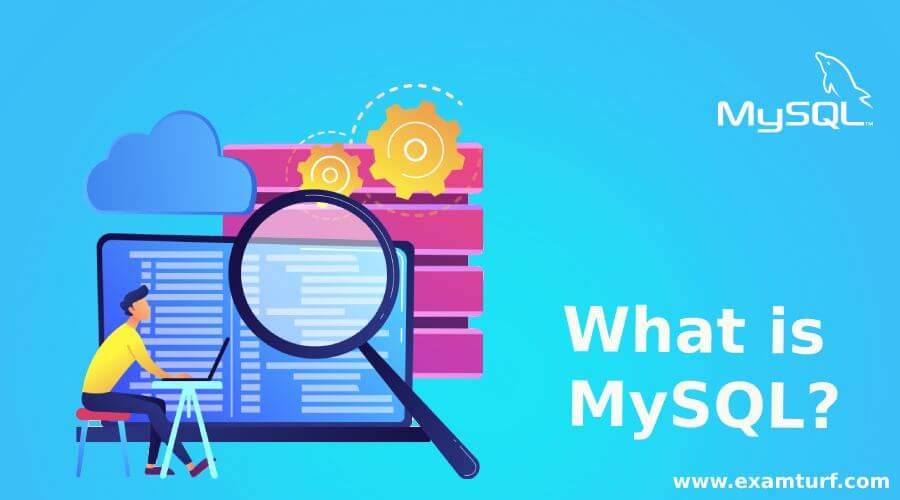
Introduction To MySQL
It was a Swedish company that created MySQL AB and it was founded by Allan Larsson, David Axmark, and Michael “Monty” Widenius. But, the actual development of MySQL started in 1994 by Widenius and Axmark. On 23 May 1995 first version of MySQL came into the Market. Initially, it was created for personal use, MySQL, but later they developed a new SQL interface by keeping the same API, many developers were able to use MySQL. MySQL AB was taken over by Sun Microsystems in 2008. On 27 January 2010, Sun Microsystems was acquired by Oracle. In 2019, MySQL was declared as DBMS of the year by DB-Engines ranking.
New To Databases?
A database is a collection of information and data, electronically stored in a computer system. Users can easily access and manage the database. You can organize the data in various ways like into tables, columns, rows, and indexes. It also allows us to perform database operations like creating, accessing, managing and searching the data.
What Is MySQL Database?
- It is server software and an open-source relational database management system (RDBMS). It is considered as one of the best RDMS that are used for developing web-based software and allows you to retrieve, modify, and store data in relational format.
- According to GNU General Public License, MySQL is free and open-source software that is available under different proprietary licenses.
- Users can directly interact with the help of SQL as MySQL has stand-alone clients. It works on various different system platforms for example BSDi, AIX, FreeBSD, macOS, HP-UX, i5/OS, eComStation, IRIX, ArcaOS, Linux, and Microsoft Windows.
- It is based on client/server architecture which means that application programs communicate with the database server (MySQL). Anyone can save changes, query data, and many more. MySQL server is scalable because it supports multi-threading. It can handle any amount of data and is considered one of the fastest database languages.
- MySQL server supports many different libraries and client programs, backend, APIs (application programming interfaces), several different administrative tools.
- It creates a database and then defines the relationship of each table. When clients make requests by typing SQL statements on MySQL, the server application will respond according to the request made by a client.
- It is essential to have MySQL server and data files if anyone is working on a local machine. If you have a remote database, then it is not important to install these features.
Types Of DBMS
Given below are the four types of DBMS:
- Hierarchical database
- Network database
- Relational database
- Object-Oriented database
1. Hierarchical DBMS
In this type of DBMS system, you will see that model data is arranged in a tree-like structure. Data is organized in a Hierarchical (top-down or bottom-up) manner. You will get to see that Data are shown using a parent-child relationship. The Thumb rule in this type of DBMS system is that parent can have many children, but children have only one parent.
2. Network DBMS
This type of database allows the child to have multiple parents. Data and entities are arranged in a graph which is easily accessible through several paths. You can design more complex relationships like orders/parts many-to-many relationships.
3. Relational DBMS
It is one of the easiest and widely used Database management systems amongst all the Database. In this model, data are normalized in the rows and columns of the table. Data are stored in fixed structures and manipulated using SQL.
4. Object-Oriented DBMS
In this type of database, data are stored in the form of objects. Object-oriented database model has structures called classes. It stores both data member’s values and operations.
What Is RDBMS?
- The full form of RDMS is Relational Database Management System. RDBMS is specifically designed for relational databases. RDBMS is a subset of DBMS.
- A relational database stores data in a structured format with the help of rows and columns. RDBMS is capable of providing a visual representation of the data.
Various Uses Of MySQL
Given below are the various uses mentioned:
- It is essential because it provides basic functionality to the website.
- You will require a MySQL server to host a website. You will require a MySQL server to store the data of a website.
- If you are giving a thought or want to develop websites, It is one of the best options. It has essential elements of the LAMP stack.
- Approximately, 4909 companies, including Uber, Airbnb, and Netflix are using MySQL database in their tech stacks.
- It is also used by developers for website development.
- It can be used for personal as well as for business projects.
Conclusion
MySQL is a widely used database management system. If you are using MySQL, it will save your costs, time and provide great security to data. It is compatible with every operating system.
Recommended Articles
This is a guide to What is MySQL? Here we discuss the introduction to MySQL, what is RDBMS, uses along with its different types respectively. You can also go through our other suggested articles to learn more –
Are you preparing for the entrance exam ?
Join our Data Science test series to get more practice in your preparation
View More